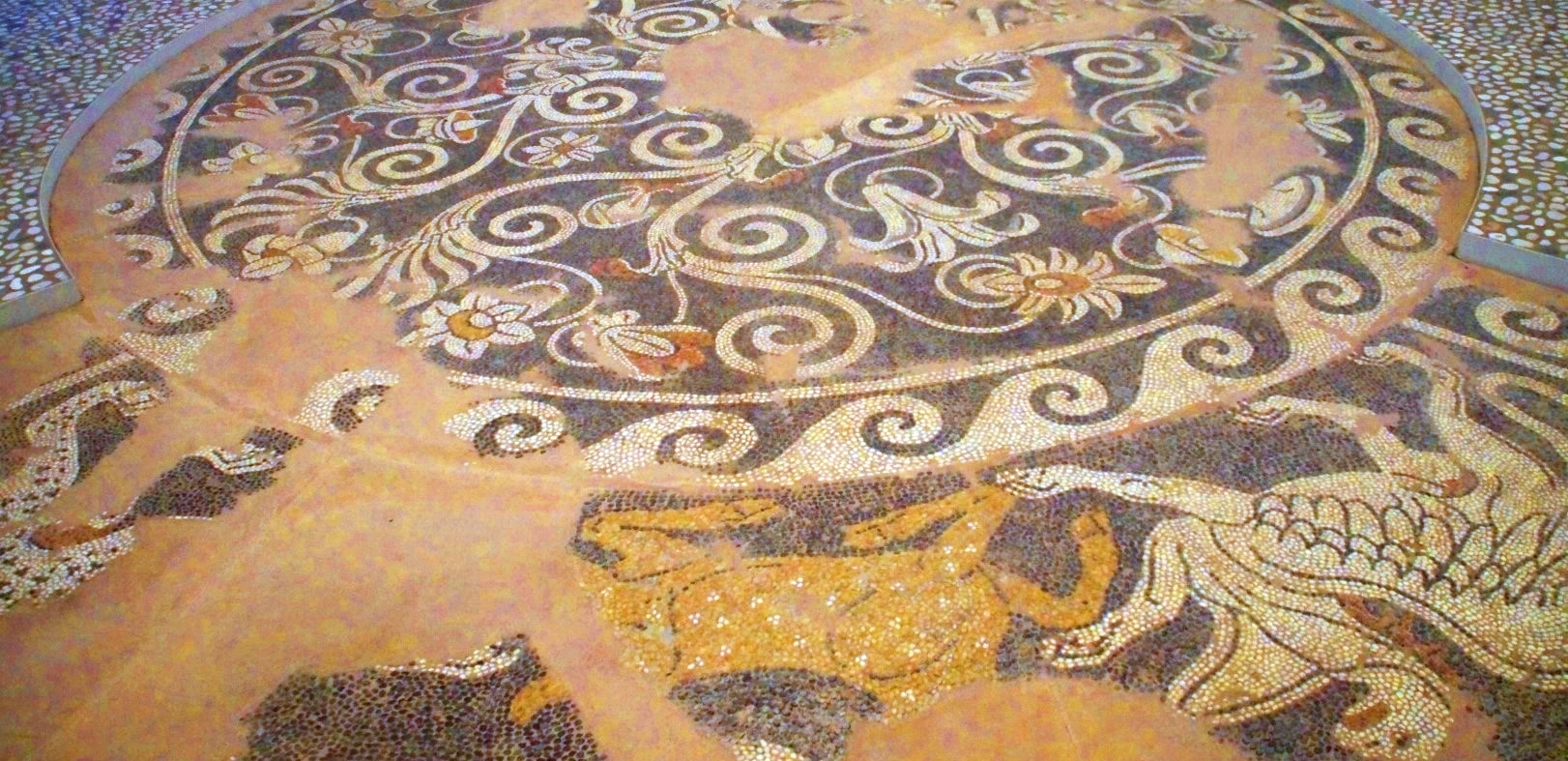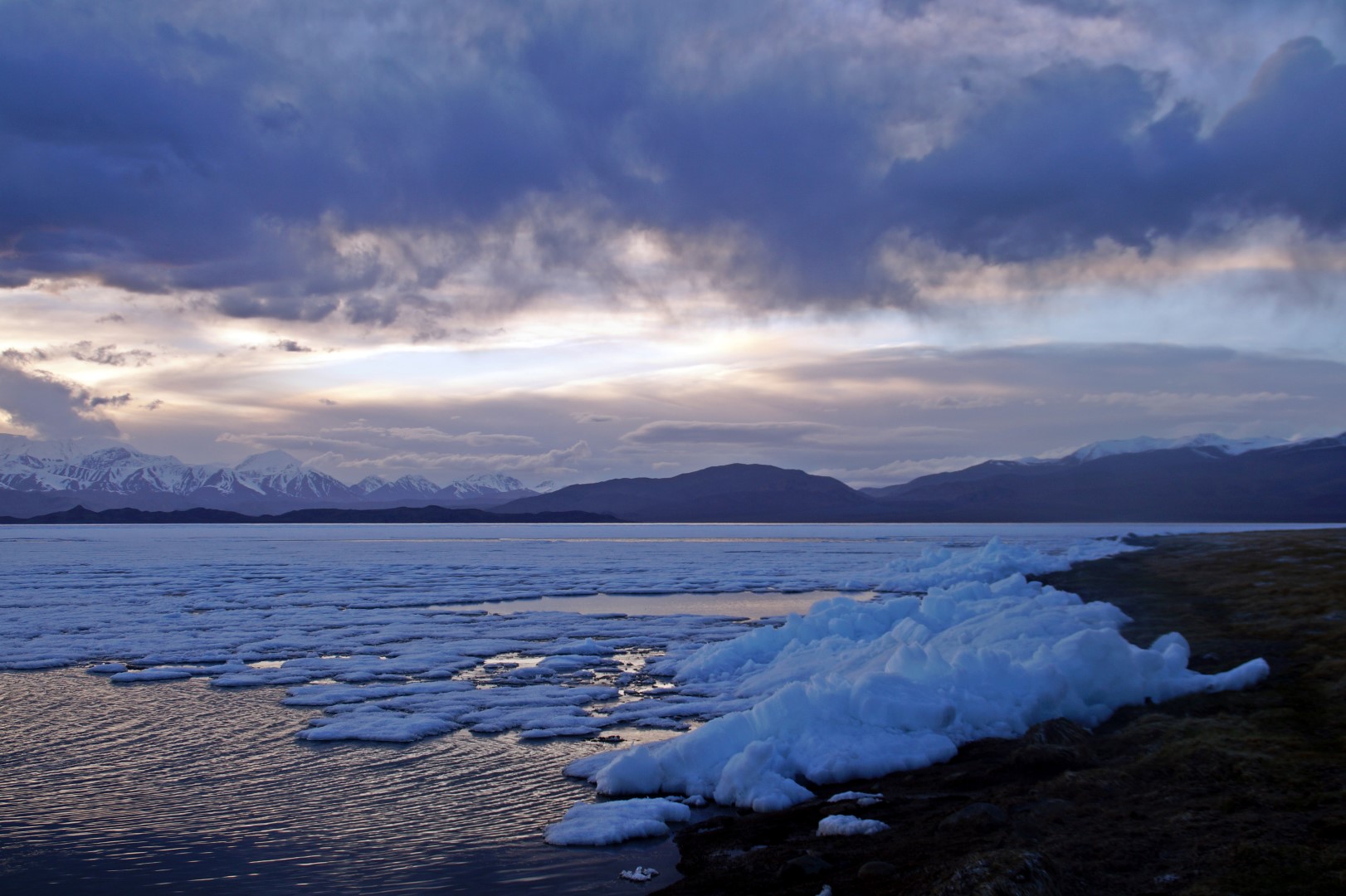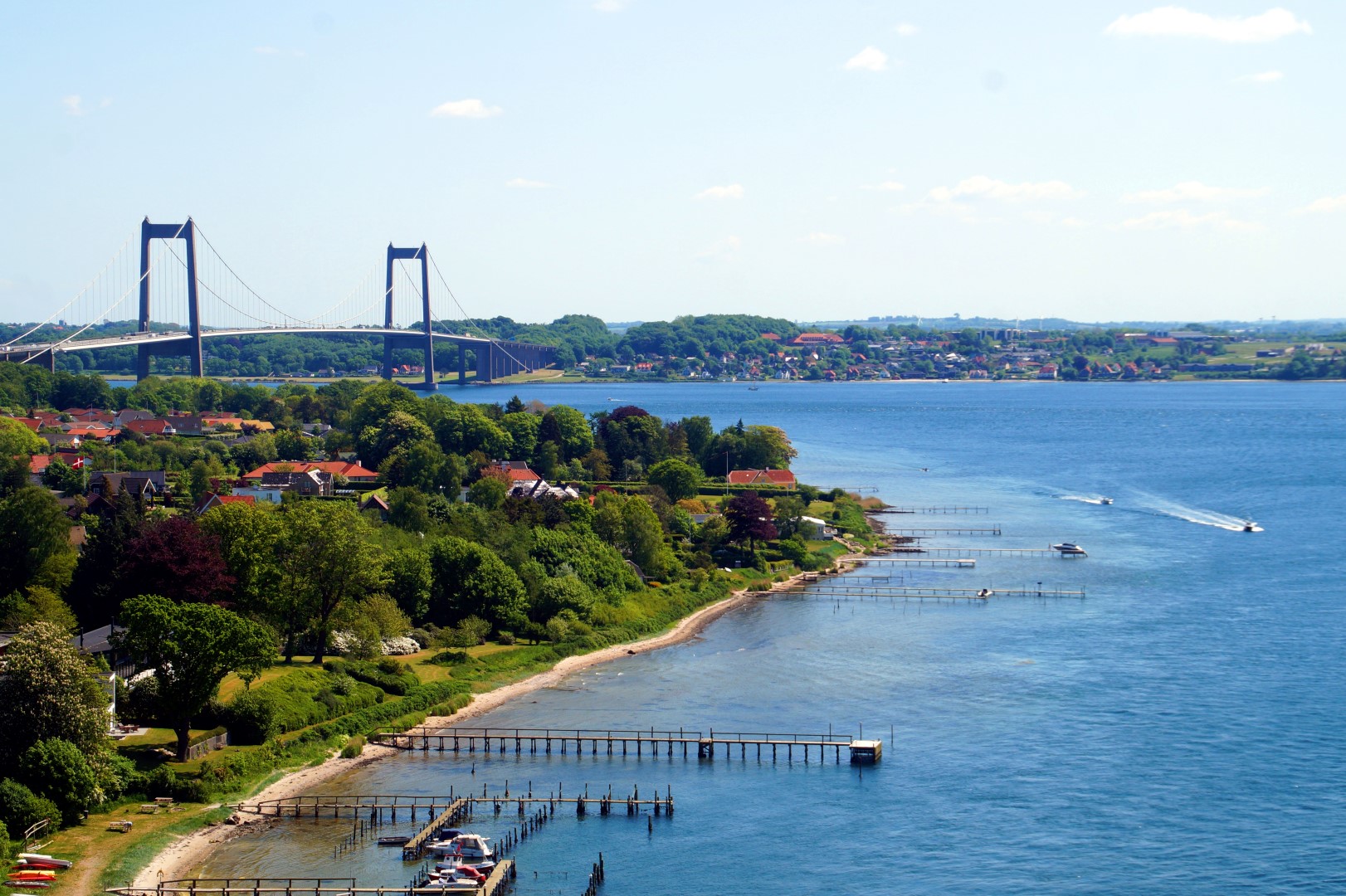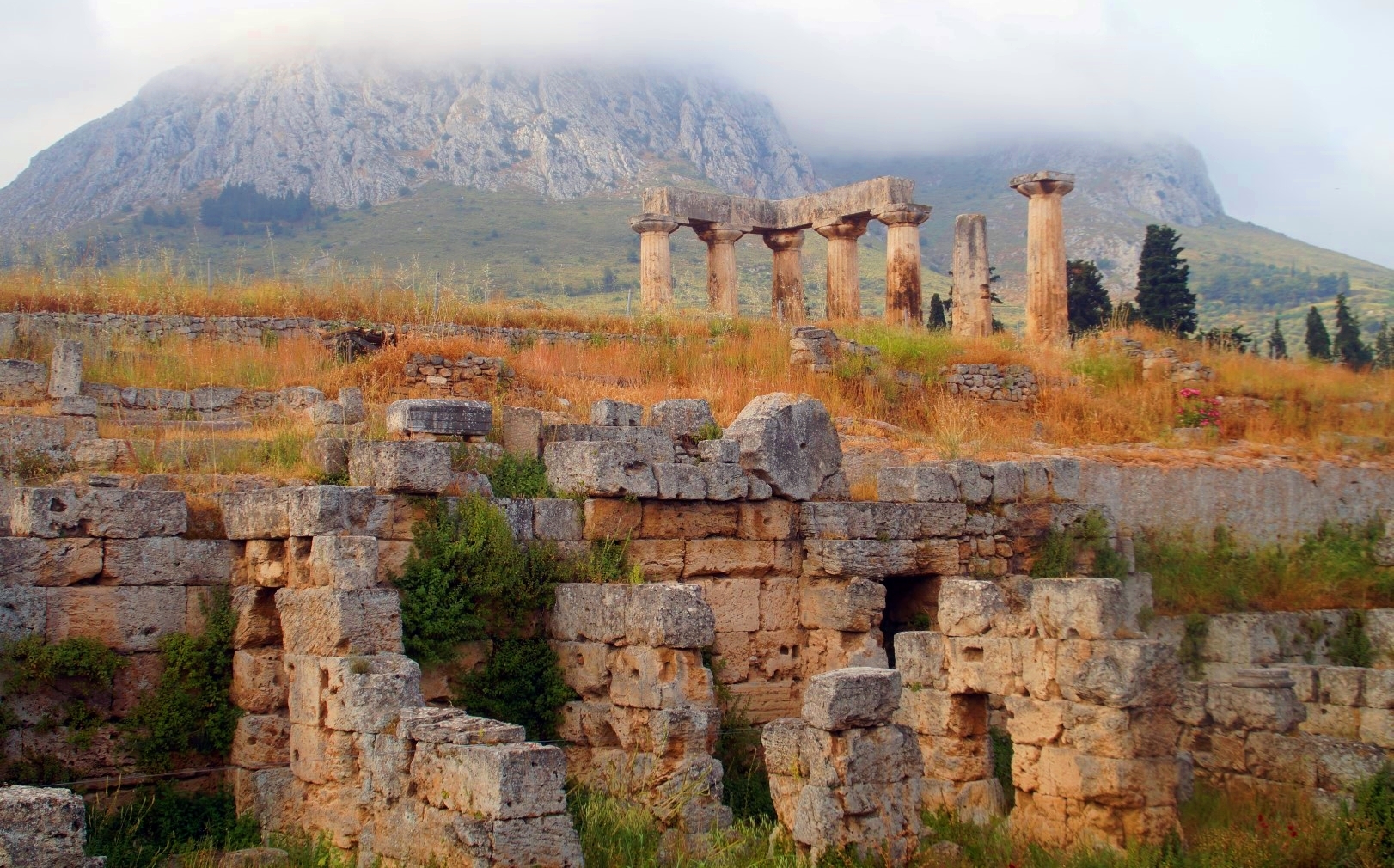On the third day of travelling around the mainland of Greece, we got up early in Kalambaka and headed north towards Vergina, our first stop of the day.
The small town of Vergina in northern Greece is best known for the UNESCO World Heritage Site of Ancient Aigai, which was the first capital of the ancient Kingdom of Macedon (from 808–399 BC). This ancient site was discovered in 1976, and the following years many burials of Macedonian kings were found, including the famous tomb of Philip II, the father of Alexander the Great. Unlike most of the other tombs, the tomb of Philip II was intact and had not been disturbed.
We were there for a few hours, where we had time to thoroughly study the grave and wander around the museum which houses most of the artefacts found at the site.

The ancient city of Pella was a natural next stop, as it became the next capital of the Kingdom of Macedon after Vergina (399-167 BC). Pella is mostly famous for being the birthplace of Alexander the Great in 356 BC.
On the site of the ancient city stands the Archaeological Museum of Pella, which was built in 2009 with a rectangular atrium, which is a reference to the central peristyle courtyard of the ancient houses in Pella.
Near the museum is the archaeological site of the ancient Macedonian palace, situated on a central hill above the ancient city and occupying over 60,000 square meters. Only parts of the palace have been excavated with finds including a palaestra and baths. Dating of the palace has proven to be difficult, as the large buildings could date to the reign of Philip II (359–336 BC), while other buildings are older. Archaeologists believe that the palace was used as a royal residence as well as a place of government.





Our overnight stop that day was in Thessaloniki, the second largest city in Greece and the capital of Greek Macedonia.
That evening, we went for an evening walk around the city center of Thessaloniki to look at the Arch of Galerius and the White Tower, which are two of the most famous landmarks in the city, as an introduction to the city.
The Arch of Galerius is an early 4th-century AD structure built under the rule of the Roman emperor Galerius as part of his palace in Thessaloniki. The arch emphasized the power of Galerius with marble sculptural panels that celebrate the victory over the Sassanid Persians.
The White Tower is originally from the Byzantine period, where it was used as a fortification. During the Ottoman rule of Thessaloniki it was used to fortify the city’s harbour before becoming a prison and scene of mass executions. After Greece gained control of the city in 1912, the tower was remodeled and its exterior whitewashed. It has since become a symbol of Thessaloniki.
After explorings those two monuments, I ate a lovely vegetable-based dinner in the very center of the city with the teachers and some of the other students, and afterwards grabbed a beer at the nearby pub before calling it a night.





The next day, we woke up with the sun and headed out into Thessaloniki.
We had a long day ahead of us with over nine hours of walking and sightseeing! We started the day by exploring the Archaeological Museum of Thessaloniki. We saw basically the entire museum – from the earliest times from circa 300.000 BC to the Ottoman period. The museum was very interesting and one could easily spend several hours taking it all in despite the small size.


Thessaloniki is home to many notable Byzantine monuments, fifteen of which are listed as UNESCO World Heritage Sites. For several centuries during the Byzantine Empire (395–1453 AD), Thessaloniki was the second-most important city after Constantinople (modern-day Istanbul), and the city played an important role for Christianity throughout the Middle Ages. Most of the buildings from the period were decorated in outstanding Byzantine Christian art, some of which are still preserved to this day.
We spent the next few hours exploring the Byzantine monuments, starting at the famous Rotunda of Galerius, located just 125 meters northeast of the Arch of Galerius. The cylindrical structure was built in 306 AD and is thought to have been a temple to one of the Roman gods. Today, the rotunda is known as the Greek Orthodox Church of Agios Georgios. It was converted into a Christian church in 326 AD as the first church in Thessaloniki, where it was embellished with beautiful mosaics that are still partly preserved. It stayed a Christian church for over 1200 years until the Ottoman Empire conquered Thessaloniki and converted the church into a mosque in 1590, where the minaret was added to the structure. In 1912, when the Greeks regained control of the city, the rotunda was converted into a Christian church once again, although the minaret was left standing.


Next up was the beautiful and quaint Church of Saint Panteleimon, a late Byzantine church in the eastern part of the old city near the rotunda. Just like the rotunda, this church was also converted into a mosque during the Ottoman rule, and converted back into a church in 1912, where it was dedicated to Saint Panteleimon.

Close to the church stands the larger Church of the Archeiropoietos, a Byzantine church from circa 450-470 AD, making it one of the oldest of the city’s surviving churches. The church, which has been modified several times throughout its history, is a three-aisled basilica with marble columns separating the aisles. Inside the church is a middle Byzantine chapel dedicated to St. Irene as well as two galleries above two of the aisles. The church was the first church to be converted into a mosque during the Ottoman rule and it became the city’s principal mosque. Just like the other two churches, it was converted into a church again once the Greeks regained control over Thessaloniki.
The church is incredibly rich in original interior decoration including beautiful mosaics and early 13th-century frescoes.

After we had explored the three Byzantine churches, we were really tired from walking about all day, so a few of us decided to get some lunch at a restaurant before meeting with the others for the afternoon tours.
The tour that Lula, Amanda and I chose to go on was to the Ottoman monuments of the city. The Ottoman Empire (c. 1299–1922 AD) overtook the city of Thessaloniki after a three-day-long siege by the Ottoman Sultan Murad II on March 29th 1430. As we had previously learned, several of the churches were converted into mosques, and new mosques, Turkish baths and colourful oriental markets were built.
There doesn’t seem to be as much focus on the Ottoman remains in the city compared to the Byzantine and Roman remains, as most of the sites were closed and some were even in decay. We were only able to enter the Alaca Imaret Mosque, which was not very well preserved with only a few remnants of the original building left. It’s such a shame as the Ottoman era is just as important for the history of the city and how the city has developed into what it is today.



At the end of the long day, we walked to the White Tower, where we met up with all the others, grabbed some delicious ice cream and said our goodbye’s to Thessaloniki as we drove off to Chalkidonia, our next stop on the roadtrip.




4 COMMENTS
Ann
7 years agoOh, Mel, these are great news, wow, I am so excited! HURRA! Please let me know which city (cities) you are planning to explore, I would be honored to meet both of you and show everything I know. So, let’s keep in contact and discuss everything when you know the details, ok? Can’t wait to meet you, Mel, that’s going to be AWESOME!
Melissa Cherry
7 years agoThank you dear Ann, that would be lovely!! We haven’t done any planning yet, but I will let you know when I know more 😀 I can’t wait to meet you either, it will be great!! 😀
Ann
7 years agoGreece is the place where history is everywhere! Never been there, but it’s in my list! Wonderful journey ?, great story!
Melissa Cherry
7 years agoYou would love it Ann! 😀
Btw, my mum and I have just decided that our next mother/daughter trip will be to Ukraine!! We will probably go in February or March!!! 😀 I can’t wait to explore your beautiful country and hopefully meet you :-*